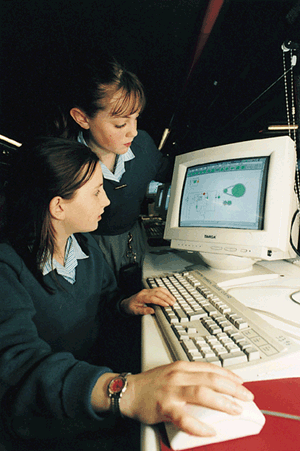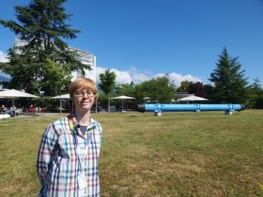
What do the evolution of the universe and the relative proportions of men and women in physics have in common? Well, imagine that men are matter and that women are antimatter. And note that equal amounts of matter and antimatter were created in the big bang, just as equal numbers of baby boys and girls are born every year. Yet for reasons that are still not understood, we now live in a universe that is dominated by matter and a world where physics is a male-dominated profession. Particle physicists believe they are close to solving the first of these asymmetries, but despite much talk and some progress, a satisfactory solution to the second inequality is still a long way off.
A recent report that was prepared for the European Commission by the ETAN Expert Working Group on Women and Science observed that “there is a continuous drop in the numbers of women at each level of the academic ladder and many highly trained women are lost to science. Institutions that employ scientists tend to be behind the times in addressing the life/work balance and need to modernize”. The working group also concluded that “the under-representation of women threatens the goals of science in achieving excellence, as well as being wasteful and unjust”. Philippe Busquin, the European Commissioner for Research, has identified the lack of women scientists in Europe as a high priority for his term in office.
Good data are difficult to find but, in general, roughly equal numbers of men and women go to university in most countries. However, a “leaky pipeline” means that the proportion of women becomes smaller as you move up through the ranks in both academia and industry. This becomes more pronounced when we look at just science and technology, and even more pronounced in physics. And within physics there are considerable variations from country to country.
In the UK, for instance, only about 20% of physics undergraduates are women – although girls outperform boys in the pre-university A-level exam – and this figure falls to 7% for lecturing staff and less than 2% for professors (compared with an average of 9% for all subjects.) Still, this represents progress of sorts: ten years ago there were just two women professors of physics in the UK, today there are at least 12. On page 8 we ask what advice these physicists have for young women who would like to follow in their footsteps.
The story is similar in the United States where only 3% of physics professors are women. However, as we report on page 9, female physicists have recently been appointed to two of the most senior research positions in the US. Elsewhere in Europe – in particular in France, Italy, Portugal, Spain and most of Scandinavia – the number of senior women scientists is noticeably higher than in the UK and US, but there is still room for improvement.
The low numbers of women holding senior positions in physics results from a combination of two factors: the relatively low numbers of women studying physics in schools and universities, and the effects of the “leaky pipeline”. Physics is seen as a male subject, so those recruiting pupils and students into school and university courses must go out of their way to make the subject attractive to young women. And there is clearly some unnecessary asymmetry at work when about 20% of those starting physics degree courses are female, but only 2%-3% of the professors teaching them in some countries are women.
Lord Rutherford is often held up as an outstanding role model for young physicists, but it is to be hoped that his famous comment to Lise Meitner on meeting her for the first time – “Oh, I thought you were a man” – belongs to an era that has long past.



